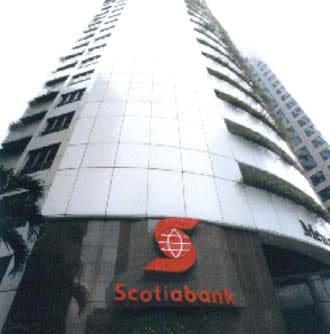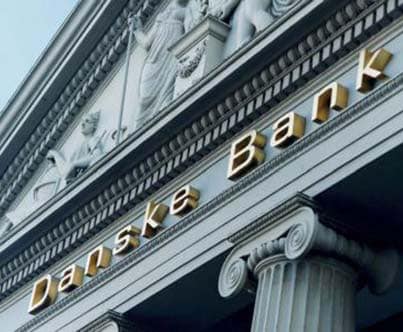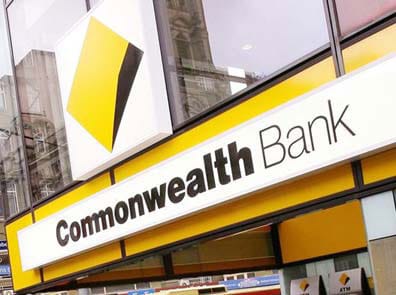WORLD’S BEST DEVELOPED MARKETS BANKS 2009
Global Finance unveils its annual list of the best banks in developed markets around the world.
By Laurence Neville
When Global Finance published its 2008 awards a year ago, the financial crisis was—with hindsight—still in its infancy, but already we noted that the prior year had been one of the most tumultuous in recent memory. The year just gone must surely rank as the most volatile and toughest for the banking sector in living memory.
The world of finance has been completely transformed in the past year. Ideas that would have been laughable, most notably nationalization, have become common practice across many countries. In the most extreme example, every major bank in Iceland is now owned by the government, while in the United Kingdom one of the largest banks in the world, RBS, is now 75% public-owned. Even in the United States it is becoming accepted wisdom that some of the largest banks may need to be nationalized.
The explanation for this change of heart regarding nationalization is simple: The recession to come will be the most severe since the 1930s and will further crush capital levels—and only governments have the funds necessary to recapitalize banks. However, already there are concerns about whether all countries will be able to assume the liabilities to which their banks have exposed them. In the case of Iceland, for example, the rampant expansion of the country’s banks has proved too much to bear, and the government has sought IMF help. Some observers believe other governments will have to become increasingly selective in which banks they save if they are to preserve the stability of their economies.
More generally, there is already a widespread assumption—although rarely stated by governments and central banks—that the banking sector in many countries is technically insolvent. And there is barely a country in the developed world that has not had to support its banks in some way, either through the guarantee of deposits to stem a run on banks, a guarantee for borrowing to ensure access to market liquidity, or through various central bank liquidity schemes that swap securities for government paper.
The world now understands that the long-running boom from the 1990s until mid-2007 was founded on an increasingly unsustainable level of borrowing. Yet to a large extent it was that borrowing that drove banks’ revenues during those years. Increases in retail and corporate debt have been the basis of banking sector success in the past decade. Leverage at banks themselves played a huge role in generating profits. And new technologies such as securitization played an ever more significant role in freeing up bank balance sheets for yet more lending.
Now consumers and corporates are reining in their borrowing (assuming they can even get access to funds). Some of the world’s leading banks have been forced into humiliating sales of assets at knockdown prices as they have sought to reduce leverage, and many banks have scaled back or closed down their proprietary trading operations. Meanwhile, securitization has almost disappeared as a public market. In a sign of the times, almost all issuance is now to create securities that can then be used for repo with central banks such as the European Central Bank. Moreover, banks are unlikely to be given the regulatory leeway they have enjoyed in the past in using off-balance-sheet vehicles and financial engineering in order to boost profits.
As if such trends—albeit of the banks’ own making—were not enough for the world’s banks to contend with, they have now decisively assumed the mantle of public enemy number one. It is not by chance that the delegations of bankers facing parliamentary committees in the UK or senators in the US resemble the show trials of the Soviet Union. These charades are likely to give politicians and the public little insight into how the world got into this mess. But they do provide a way to let off steam. The current anger in most countries around the world about whether executives at bailed-out banks should get bonuses serves broadly the same purpose.
Rightly, some adjustments have had to be made to this year’s Global Finance awards. The country categories of Iceland and Ireland have been removed, for example, because it has been impossible to find a bank that met the basic standards required of a winner. However, the awards have always enjoyed a broad remit: For example, banks can win regardless of whether they are privately held, listed or state-owned. What matters is quality and profitability.
The awards are based on extensive consultations with bankers, corporates and equity and credit analysts worldwide but ultimately are the decision of Global Finance’s editors. Judging criteria include growth in assets, profitability, geographic reach, strategic relationships, new business development, innovation and the banks’ ability to conduct and fund themselves in the current environment. The latter is already a significant problem and could become worse as asset quality deteriorates: Fitch says the number of negative rating actions on banks globally almost doubled in the fourth quarter of 2008 to 266 compared to 135 in the third quarter, and it anticipates that the negative-rating trend will continue in 2009.
NORTH AMERICA
BERMUDA — Butterfield Bank
Celebrating 150 years of operation in 2008, Butterfield Bank remains Bermuda’s largest independent bank, offering a full range of community banking services, as well as international financial services such as private banking, asset management and personal trust services. Butterfield has been busy in its anniversary year, with the completion of a merger between Butterfield Fund Services and the Fulcrum Group to form a new Bermuda-based company, Butterfield Fulcrum Group (BFG), in September 2008—a deal that puts the new group in the top-10 of global alternative asset fund administration companies.
As well as being strategically advantageous, the creation of BFG also delivered a one-time gain of $115.5 million in the third quarter of 2008. Butterfield admirably wrote down $29.2 million on previously capitalized investments in technology as part of a migration of its core information and technology systems to a common information technology platform. This move is due to be completed in 2010 and is likely to be more than offset over the medium term through operational savings from systems duplication and licensing fees, and will enhance customer services.
Alan Thompson, president and CEO
www.butterfieldbank.com

CANADA — Scotiabank
Along with banks in almost all developed markets, Canada’s leading banks—Royal Bank of Canada and Scotiabank—had a tough fourth quarter (which ended October 31, 2008). Based on that quarter alone, RBC would likely be judged the better bank of the two. Scotiabank’s earnings per share (EPS) fell by a catastrophic 70.5% while RBC’s dropped a more moderate 19.8%. Similarly, Scotiabank’s net income was down by 66% compared to a 15% fall at RBC. And Scotiabank’s return on equity (ROE) was a pitiful 6% compared to RBC’s 16.1%.
However, over the full year the two banks are more evenly matched, with Scotiabank suffering a 23.9% fall in EPS versus 19.33% at RBC and a 22% slump in net income versus a 17% fall at RBC. Moreover, their ROEs are evenly matched at 17% for Scotiabank and 18% for RBC.
Scotiabank is this year’s winner for a number of reasons. First of all, its five-year ROE enjoys a commanding lead over RBC. And, second, Scotiabank’s core business in Canadian banking, international banking and Scotia Capital continues to look strong: Excluding the $642 million writedown relating to the Lehman Brothers’ bankruptcy and valuation adjustments, net income for the fourth quarter was flat on the previous year—a remarkable achievement given market conditions.
Rick Waugh, president and CEO
www.scotiabank.com
UNITED STATES — JPMorgan Chase
A year ago Goldman Sachs looked liked one of the strongest banks on Wall Street following a series of successful calls on the subprime crisis; it was a serious contender for best bank in the US and was only narrowly beaten by JPMorgan Chase. Now Goldman Sachs and Morgan Stanley have given up their investment bank status (in September 2008, to get access to federal funds) and are rapidly trying to develop broader business models that look remarkably like that of JPMorgan Chase.
JPMorgan Chase has looked like a winner throughout the crisis. To be sure, it has received $25 billion from the Troubled Assets Relief Program. But it also reported a fourth-quarter profit of $702 million. Moreover, JPMorgan Chase has received what looks like official recognition of its survivor status: In castigating some banks for their foolish policies, President Barack Obama specifically cited JPMorgan Chase and its chief executive, Jamie Dimon, as examples of good management during the crisis.
Jamie Dimon, chairman and CEO
www.jpmorganchase.com
EUROPE
AUSTRIA — Bank Austria
The storm clouds are certainly gathering for the UniCredit Group: The bank is reported to be considering applying for state aid, and it seems certain to have a tough 2009 as the economic environment in Central and Eastern Europe rapidly deteriorates. However, the bank’s operations still looked strong in the third quarter of 2008, the last for which figures have been released.
Bank Austria achieved results that were better than the same period of the previous year despite the repercussions of the credit market crisis: Profit before tax was 14.7% higher than the third quarter of the previous year. Moreover, consolidated profit for the first nine months of 2008 was €1.64 billion—slightly higher than the previous year’s level. And while the bank looks to be seeking additional capital, it has already raised €6 billion through a rights issue and innovative convertible bond offering.
Erich Hampel, CEO
www.ba-ca.com
BELGIUM — KBC
Belgium’s banking sector is well and truly battered: The country’s largest bank, Fortis, has been split up following the farrago of its acquisition of some assets of ABN AMRO (in a competition for worst-run bank of the year, Fortis would run a close second to the UK’s RBS, which was also involved in the debacle). Meanwhile, one of Belgium’s other large banks, Dexia, has also had to go cap in hand to the government. In such company, KBC shines as the healthiest bank in a sick banking sector.
To be sure, the bank has received two injections of capital from the government: In October 2008, €3.5 billion was received as the bank crisis reached its peak while in January this year, a further €3.5 billion was pledged after the bank’s shares lost more than 70% of their value. But while KBC announced an annual loss of almost €2.5 billion for 2008—in the fourth quarter alone there was a net loss of €2.63 billion—there is evidence that the bank has successfully reduced its risks. Moreover, given the capital injections, the financial position of KBC looks solid, and underlying business performance is improving: January 2009 was a better month than January 2008.
AndrÈ Bergen, CEO
www.kbc.com
 DENMARK — Danske Bank
DENMARK — Danske Bank
Denmark produced one of the first casualties of the credit crisis with the collapse of Roskilde Bank in August 2008, and the turmoil in the capital markets and the economic slowdown had a huge effect on Danske Bank’ s 2008 results. Net profit sank to just DKr1.0 billion ($170 million) compared to DKr14.9 billion ($2.53 billion) in 2007 following loan impairment charges of DKr8.8 billion. The group also had to make huge impairment charges on its loan portfolio in the plummeting Irish market, where it operates through National Irish Bank. Similarly, market-related activities—in Danske Markets, Danske Capital and Danica Pension—produced a miserable 2008.
Nevertheless, the group’s main source of income—its banking activities—proved robust and generated satisfactory results. Excluding the guarantee commission payable to the Danish state for participation in the guarantee scheme for deposits and loans, expenses were flat on 2007, and, crucially, at the end of 2008 the bank met its liquidity targets with a core tier-one capital ratio of 9.2%. By deleveraging its balance sheet, reducing non-lending assets and further improving liquidity management, Danske Bank should be able to weather whatever storms 2009 delivers and be well placed to prosper once the economic environment improves.
Peter Straarup, CEO
www.danskebank.com
FINLAND — Pohjola Bank
When Pohjola Bank released its January-September 2008 figures, the immediate indication that all was not well was the concurrent announcement that the bank would launch a €300 million rights issue to recapitalize. Certainly, earnings before tax were lower at €114 million compared to €220 million a year earlier, and EPS fell to €0.41 compared to €0.80.
However, the corporate loan portfolio and loan margins within the banking division showed sustained growth, and the operations posted good earnings. Moreover, Pohjola’s decision to come to market with a rights issue looks more like a prudent move and sound positioning for future opportunities rather than an emergency capital raising. At the end of 2008 Pohjola’s tier-one ratio was 9.6%—well above the bank’s own stated target of a minimum of 8.5% and the minimum regulatory capital requirement of 4%. Instead, the rights offering will further strengthen Pohjola’s capital base and secure its ability to provide credit in a market where the availability of financing has significantly decreased. And with capital adequacy now an important competitive edge between banks, by increasing its capital base Pohjola should be able to further increase its dominance in Finland.
Mikael Silvennoinen, president and CEO
www.pohjola.fi
FRANCE — BNP Paribas
BNP Paribas has profited handsomely from the calamity that crushed Belgium’s Fortis: The bank has become the eurozone’s largest deposit bank—a characteristic of supreme importance in the current market, where capital adequacy is all-important—and added two new domestic markets, Belgium and Luxembourg, to its European footprint. It is highly doubtful whether BNP Paribas would have been able to achieve such an outcome in normal market circumstances. But its ability to act quickly and garner the necessary resources was impressive.
Unsurprisingly, in 2008 the group’s revenues fell 11.8% on the previous year: The resilience of retail and asset management helped to limit the damage, generating returns on pre-tax allocated equity of 25% and 28%, respectively. Moreover, thanks to cost-cutting measures in all business units and a substantial reduction in bonuses, operating expenses fell 1.9% compared to 2007. Nevertheless, the downturn in the economy, in particular in the US, Spain and Ukraine, combined with numerous counterparty defaults in the financial markets, had a huge impact on the bank’s balance sheet. BNP Paribas has pledged to continue its de-risking process while redesigning its product offering to adapt it to customers’ needs. Only time will tell if its actions are enough to offset further weakness in some of its core markets.
Baudouin Prot, CEO
www.bnpparibas.com
GERMANY — Commerzbank
Germany is in dire straits, and its banking system is suffering—and that was before the impending economic disaster in Central and Eastern Europe, where Germany’s banks have expanded aggressively in recent years. The country’s largest bank, Deutsche Bank, posted its first full-year loss in 2008 (of €5.7 billion) for more than 50 years after a catastrophic three months for its core investment banking business.
Commerzbank, the country’s second-largest bank, has also suffered but appears to have faced up to its problems sooner and acted more rapidly to solve them by taking €18.2 billion from the government in exchange for a 25% stake. In addition, Commerzbank has taken advantage of the crisis to acquire Dresdner Bank, broadening its franchise domestically and gaining access to new deposits.
For the full year, Commerzbank’s consolidated surplus attributable to its shareholders amounted to €3 million compared to €1.9 billion in 2007. Its operating loss for the year was €378 million, compared to an operating profit of €2.5 billion for the previous year (the operating loss for the fourth quarter was a shocking €822 million). However, excluding one-offs, the operating profit for the past year remained positive at €2.1 billion. Moreover, Commerzbank’s operating earnings potential remained impressive in its core private- and business-customer franchises as well as in the crucial middle-market-company Mittelstand sector.
Martin Blessing, chairman and CEO
www.commerzbank.de
GREECE — EFG Eurobank
In the most recent results released by EFG Eurobank, for the nine months to the end of September, the worst of the financial and economic crisis had yet to be reflected; next year’s awards may tell a different story. Nevertheless, for the period under review, EFG Eurobank delivered healthy growth rates, enhanced its profitability and maintained high capital adequacy and sound liquidity—the result of prudent shareholder capital utilization and effective risk management.
For the first nine months of 2008, group net profit rose by 4.6% to €647 million despite the adverse conditions, while recurring profit grew by 17.9% to €560 million. Crucially, given the increased importance of capital adequacy, customer deposits increased by an impressive 42.5% on the same period a year earlier while capital adequacy was a sound 11%. Despite the strong growth in business, group operating expenses fell by 3.1% quarter-on-quarter.
The challenge for EFG Eurobank is to respond to a new market environment, and there are promising signs that it understands what is required: Priority is being given to the efficient utilization of capital, liquidity management and deposit gathering. Similarly, the bank is adopting a more selective, prudent and proactive approach to risk while rationalizing its network expansion in Greece and what it calls new Europe (Bulgaria, Serbia, Romania, Turkey, Poland and Ukraine). Moreover, it plans to further improve efforts to control costs.
Nicholas Nanopoulos, CEO
www.eurobank.gr
Italy — Intesa Sanpaolo
Italy, already one of the weakest economies in Western Europe, is widely predicted to suffer a 4% fall in GDP in 2009, putting further pressure on its banks. While UniCredit has sought €3 billion from investors, Intesa Sanpaolo has simply canceled its dividend, which it says will give it a core tier-one capital ratio of up to 8%—in line with other European banks that have received state investment. Only time will tell whether Intesa Sanpaolo’s frequent affirmations that it has never considered a capital raising—and will not need to—is hubris.
In the most recent results published, for the first nine months of 2008, Intesa Sanpaolo delivered a solid operating performance despite the unprecedented market conditions. The bank was able to claim that consolidated net income for the first nine months of 2008 grew 13.9% over the same period of 2007 excluding the non-recurring items, profits on trading (which were €329 million in the first nine months of 2008 compared to €1.13 billion in 2007) and related taxes. The figures reveal an underlying healthy business model. Moreover, Intesa Sanpaolo has finally moved to tackle a perennial disappointment among investors: The project to integrate Intesa and San Paolo, which merged in 2006 but have largely retained their separate cultures, has been accelerated to bring forward synergies and efficiency improvements.
Corrado Passera, managing director and CEO
www.group.intesasanpaolo.com
Luxembourg — Banque et Caisse d’Epargne de l’Etat
In a year when so many banks, such as Luxembourg’s Dexia, have had capital injections from their governments—and in the case of Fortis subsequently been dismembered following a rescue—it seems only appropriate that a wholly state-owned bank, Banque et Caisse d’Epargne de l’Etat (BCEE), should be awarded the best bank in Luxembourg. BCEE is deserving of the accolade not just because it has the stability of government backing but because it excels in every aspect of its operations.
As a non-listed entity, BCEE does not report quarterly figures, but its half-yearly figures for 2008 show an increase in profit of 36% before provisions, or a 22.6% increase in net profit. Moreover, the bank appears to have recognized the risks facing the financial system earlier than most. In the same results, it noted that, given its objective of optimizing its risk/return profile, it had adopted a selective policy to interbank loans and the non-renewal of certain positions in its securities portfolio—resulting in a decline in total assets of 9.2%.
Jean-Claude Finck, president and CEO
www.bcee.lu
NETHERLANDS — Rabobank
The Netherlands has been the epicenter of much of the turmoil in European banking in the past year. The acquisition of ABN AMRO has brought ruin and break-up for its own Fortis and near-disaster for the UK’s RBS. Meanwhile, ING has sought government support for a €22.7 billion portfolio of loans, received a €10 billion capital injection from the government, reported its first-ever loss-making quarters, taken a huge hit on structured products and lost its CEO.
In contrast, Rabobank has capitalized on its strong domestic position—60% of its income comes from its home country—and strong core market in the agricultural community. Indeed, the bank is strong enough to have participated in a €1 billion capital injection into Dutch insurer Eureko in February and is also potentially looking for acquisition targets.
And while Rabobank, which is a cooperative and not solely focused on returns, has not ruled out seeking capital from the government, its capital ratios remain strong, with its tier-one ratio above its targeted high level of 12.5%. Although full-year figures have yet to be released, the bank forecasts a moderate growth in net profit for 2008. And it says that its market share in lending to Dutch SMEs has grown to 39% and its mortgage lending market share to 29%, and—most importantly—its market share in the savings market has grown to 42%.
Bert Heemskerk, chairman and CEO
www.rabobank.com
NORWAY — DnB NOR
By far the largest bank in Norway, DnB NOR, beat analysts’ expectations in the fourth quarter when it achieved higher pre-tax operating profits (excluding writedowns) than its previous record quarterly performance. Of course, writedowns are now the most important figures in any bank’s results announcement. But even when these are included, the bank’s 38.5% fall in full-year pretax profits was smaller than expected. Another bright spot is that costs are falling. In the fourth quarter expenses represented 50.2% of income compared to 51.9% a year earlier.
The bank has so far avoided having to raise new capital from its shareholders and believes its DnB NOR Markets division, which achieved strong profits throughout the year, should be able to take advantage of opportunities in 2009. Moreover, the bank believes it is currently well capitalized relative to the risk in its loan portfolios and other operations.
Rune Bjerke, CEO
www.dnbnor.com
PORTUGAL — Banco EspÌrito Santo
The Portuguese banking system is in surprisingly good health compared with much of the rest of Europe as a result of the fairly conservative approach to risk taken by its banks. Of the five largest banks, Banco EspÌrito Santo (BES) seems to have fared best in the past year. State-owned Caixa Geral de DepÛsitos has suffered from being used as instrument of policy, not least in having to rescue Banco PortuguÍs de NegÛcios following the discovery of a €700 million fraud. Private sector rivals Millennium BCP and Banco BPI look well positioned following rights issues last year, but it should be remembered that their rights issues were not to pre-empt forthcoming losses but to recapitalize their balance sheets following a disastrous and futile takeover and counter-takeover battle.
That leaves Banco Santander Totta and BES, which is currently boosting its own capital through a €1.2 billion rights issue to pre-empt provisioning issues further down the line. BES’s net income fell 33.7% in 2008, but it still achieved a respectable ROE of 9.8% despite the financial crisis. As importantly, the bank is successfully meeting its strategic goals: Its international operations—principally in Brazil, which is so far holding its own despite the global crisis—represented 35.6% of consolidated income compared to 23.3% in 2007. In addition, BES has been generous in making provisions for credit on its balance sheet with a rise from 2.29% to 2.38% of customer loans—one of the highest levels in Iberia.
Ricardo EspÌrito Santo Salgado, chairman and CEO
www.bes.pt
SPAIN — Santander
Of the three banks that bought ABN AMRO in 2007—Fortis, RBS and Santander—only one has emerged with any credibility; indeed, only one has survived without being rescued by its government and then broken up. The Spanish bank appears to have selected the assets it wanted in ABN AMRO carefully and resisted the temptation to keep anything outside its core markets—for instance, by immediately selling Antonveneta in Italy to Monte dei Paschi di Siena—rather than empire building. Indeed, Santander’s solid credibility proved an important asset in persuading doubters when it surprised the market with a €7.2 billion rights issue in November.
To be sure, Santander is exposed to the two western European economies facing the toughest economic outlook, Spain and the UK. However, to date, its non-performing-loan ratios and profitability have remained above those of its peers in these markets. Only time will tell how Santander’s assets in Latin America will fare as the global economic downturn hits that region.
The bank’s 2008 results were strong, considering the difficult markets: Net profit was €8.88 billion—only 2% down on the year before despite a €350 million charge related to the Madoff fraud and other charges related to stakes in Fortis, RBS and Lehman Brothers. A 22% growth in net interest income (which is 60% of revenues), stable fee income (27% of revenues) and a cost-income ratio of 42% (down from 44% in 2007) more than offset sharply higher loan loss provisions (up 72%).
Alfredo S·enz Abad, second vice chairman and CEO
www.santander.com
SWEDEN — Handelsbanken
Sweden’s banks are seen as relatively well positioned to survive the global slowdown given their experience from the country’s bank crisis in the 1990s. However, it seems that some banks are better positioned than others. Sweden’s largest bank, Nordea, reported a disappointing fall in fourth-quarter net profit of 25.2% and launched a €2.5 billion rights issue in February, a week after SEB had also reported disappointing figures and announced a rights issue.
Nordea and SEB’s smaller rival, Handelsbanken, beat analysts’ expectations for fourth-quarter profits, despite also suffering increasing loan losses. The bank reported a 23% rise in fourth-quarter profits, largely due to the inclusion of a Norwegian branch of subsidiary Stadshypotek, which added significantly to operating profits. For the full year, earnings per share for continuing operations rose by 10% while operating profits went up by 4%. The improvement in profits was chiefly attributable to higher deposit and loan volumes combined with a favorable funding situation. Meanwhile, as other banks were fretting about capital adequacy, during the fourth quarter Handelsbanken’s tier-one capital ratio increased to 10.5%.
P‰r Boman, group chairman and CEO
www.handelsbanken.se
SWITZERLAND — Credit Suisse
The once impregnable bastions of Swiss banking, Credit Suisse and UBS, have been exposed as being as fragile as other international banks. Both have suffered substantially in terms of lost profits, writedowns and reputation. However, UBS has undoubtedly been damaged more than Credit Suisse. In October, as the global banking crisis reached a peak, UBS was forced to turn to the Swiss National Bank for help. It transferred $60 billion—subsequently reduced to $39.1 billion—of toxic assets to a new entity in order to cleanse its balance sheet. During the same week, Credit Suisse demonstrated its relative strength by reinforcing its capital base by Sfr10 billion ($8.54 billon) without turning to the government or needing to move toxic assets into a separate entity.
Similarly, the banks’ fourth-quarter results revealed the extent to which UBS was underperforming Credit Suisse: While both sets of figures made horrible reading, UBS’s net loss of Sfr8.1 billion ($6.92 billion) was considerably larger than Credit Suisse’s Sfr6 billion loss. Moreover, while Credit Suisse seems destined, like all investment banks, to suffer during 2009, its high-quality wealth management, private banking, domestic retail and corporate banking operations should stand it in good stead.
Brady Dougan, CEO
www.credit-suisse.com
UNITED KINGDOM — HSBC
No global bank has handled the crisis better than HSBC to date. While most US giants first sought capital injections from sovereign wealth funds, then from their own investors and finally from governments, HSBC managed to avoid a capital raising until March this year. Most importantly, HSBC has been able to come to market on its own terms—its £12.5 billion rights issue was not an emergency recapitalisation but an opportunity to bolster existing high levels of capital so that the bank might be better positioned as the global economy recovers. Nevertheless, news of the rights issue sent the banking giant’s shares on a rollercoaster ride, illustrating the fragility of investor confidence in banks across the board.
In the UK market, HSBC is the king of a radically changed environment. As Global Finance was going to press, the UK government was putting the finishing touches to a package of measures that will effectively break up RBS and leave what remains almost wholly nationalized. Lloyds TSB may have taken advantage of the crisis to snap up HBOS but the price paid has been its independence: the market sees nationalization of the new Lloyds Banking Group as almost inevitable. Finally, Barclays—though still in once piece—has been bruised by repeatedly turning to sovereign wealth funds for money and ignoring its existing investors. Moreover, there are serious doubts over its strategy. In short, HSBC is the only credible bank left standing.
Michael Geoghegan, CEO
www.hsbc.com
ASIA & THE MIDDLE EAST
 AUSTRALIA — Commonwealth Bank of Australia
AUSTRALIA — Commonwealth Bank of Australia
Australia’s banks have so far fared reasonably well in the global banking crisis, largely due to a strict regulatory regime that prevented substantial subprime exposure and a domestic economy that is only now facing a significant downturn. Among the leading banks, Commonwealth Bank of Australia (CBA) and Westpac are generally seen as more risk averse—and therefore attractive going into a recession—than National Australia Bank and ANZ.
In its half-year figures to December 31, CBA reported net income 9% higher than the previous year, although this included a non-cash gain on the acquisition of Bankwest (itself a sign of continuing strength). Excluding this, net profit after-tax decreased 16% on the prior comparative period. Nevertheless, CBA has so far managed to maintain its dividend, while rival ANZ cut its by 25%.
Ralph Norris, CEO
www.commbank.com.au
HONG KONG — HSBC
HSBC has always outclassed—not just outsized—its Hong Kong competitors, and last year was no exception. There is every indication that while the spring might have gone out of equity markets in Hong Kong—a market that previously produced high brokerage returns for HSBC—bad debts have not increased substantially, and HSBC’s core business will remain profitable for the full year. Moreover, HSBC’s reputation has made it a major recipient of deposit inflows as participants in financial markets have sought to reduce the risks associated with their investment portfolios and retail customers have moved to larger and stronger institutions.
Michael Geoghegan, CEO
www.hsbc.com
ISRAEL — Mizrahi Tefahot
Israel’s largest banks, Leumi and Hapoalim, have suffered in 2008. Consequently, Global Finance has instead chosen Mizrahi Tefahot, Israel’s fourth-largest bank by assets, as the best bank in the country. Mizrahi Tefahot’s ROE in the January-September period was 12.1%—the highest in the banking system. And while Israel’s leading banks—Leumi, Hapoalim, Israel Discount Bank and First International Bank of Israel—suffered an aggregate fall in profits of 82% in the third quarter, Mizrahi Tefahot’s profit fell just 4.3%.
Eliezer Yones, president and CEO
www.mizrahi-tefahot.co.il
JAPAN — Resona Holdings
Resona, Japan’s fourth-largest bank, has not been immune to the problems wracking the country’s financial industry. It suffered a significant slump in profits—of 41.5%—and said that full-year profits would be 47% lower. But those declines must be seen in the context of an aggregate decline in net profit for Japan’s six largest banks of 90% for the first nine months of 2008. Either through luck or design, Resona has substantially reduced its equity holdings in recent years, limiting the damage from Japan’s plunging markets. Having been nationalized in 2003—it still owes the state •2.3 trillion ($23 billion) following its most recent repayment in February—the risk-averse character of Resona appears to have positioned it well for what looks set to be one of the toughest periods in Japan’s history. Following a horrific 12.7% annualized fall in GDP in the fourth quarter and a 45.7% fall in Japanese exports in January year-on-year, the current recession looks set to be the deepest since modern Japan was founded after the Second World War.
Eiji Hosoya, chairman and representative executive officer
www.resona-gr.co.jp
SINGAPORE — United Overseas Bank
Singapore’s banks have suffered as slowing loan growth, mounting losses from bad debts and falling fee income from plummeting stock markets have eaten into their earnings. Singapore’s largest bank, DBS Group, reported a 40% drop in quarterly profit in the fourth quarter, and its second-largest bank, United Overseas Bank (UOB), also disappointed with a 34.4% fall in net profit as a result of writedowns. Net profit for the full year fell 8.2%. The outlook for UOB is tough given its dominance of the small and medium-size company sector, which is likely to be hardest hit by the downturn. However, the bank’s tier-one and total capital ratios of 10.9% and 15.3% at the end of December 2008 were well above the minimum 6% and 10% required by the Monetary Authority of Singapore and high by international standards.
Wee Ee Cheong, deputy chairman and CEO
www.uobgroup.com



